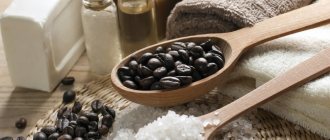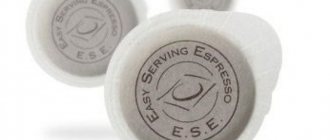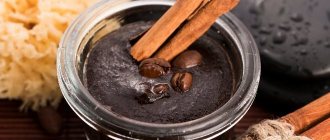After drinking this drink, we usually throw the grounds in the trash, which is a mistake, because they can be very useful. Coffee can invigorate us and strengthen plants, as a natural fertilizer, it can be used to fight pests or prepare a precious substrate rich in minerals. We will tell you how to use coffee grounds as fertilizer - for which plants it is useful and when it can harm.
What are the benefits of coffee?
When growing plants, we usually buy fertilizers to feed them, considering this the best solution. Ready-made preparations have a well-balanced composition and are easy to use, but they can change the quality of the soil, lead to soil salinization and the destruction of beneficial organisms that live in it. A safer solution would be to use natural fertilizers. It is more difficult to overdose them, and they are also not harmful to the soil and the microorganisms living in it.
What's in coffee?
Coffee grounds contain useful substances, valuable microelements that are important for the proper development of plants:
- Phosphorus – affects the proper development of the root system, stimulates flowering, fruiting, and seed formation. Improves soil quality.
- Magnesium is a building block of chlorophyll (the green parts of plants). The trace element is crucial for photosynthesis and the absorption of solar energy by flowers. Signs of magnesium deficiency are yellow, rusty spots on the leaves, slow development of young leaves.
- Potassium is especially important for young seedlings, it stimulates growth, affects flowering, and stimulates the formation of new shoots. The macroelement supports the rational use of water in the plant and the correct course of metabolic processes. Potassium improves resistance to stress factors (frequent changes in temperature, air humidity, drought, diseases, especially fungal ones). Without potassium, flowers cannot develop normally and often become stunted.
- Nitrogen compounds - support the proper development and growth of plants, regulate the consumption of other macroelements (phosphorus, potassium), improve the condition and appearance of flowers. Symptoms of nitrogen deficiency are faded color of stems and leaves, slow or inhibited growth of above-ground and underground parts, chlorosis (yellowing of leaves).
Substances from coffee residues are released relatively slowly, making them a natural fertilizer with a long-lasting effect. Therefore, you can use ground coffee as a long-lasting fertilizer for indoor and garden plants.
What else is useful about the grounds:
- Soil mixed with coffee grounds is appreciated by acidophilic plants (which like soils with an acidic pH).
- Coffee residue in the garden can neutralize excess calcium from tap water.
- They perfectly loosen the soil and reduce its tendency to dry out.
What plants benefit from coffee?
Coffee grounds have a slightly acidic pH, making them ideal as fertilizer for indoor flowers that love acidic soil and acidophilic garden plants.
Reference. Acidophilic plants are those that grow in acidic soils.
Garden plants that love acidic soil include:
- hydrangeas;
- heathers;
- ferns;
- Erika;
- rhododendrons;
- sorrel;
- cranberry;
- blueberry;
- mosses;
- some azaleas, vegetables such as tomatoes;
- strawberry.
Which potted flowers love acidic soil:
- fern;
- anthurium;
- camellia;
- begonia;
- jasmine gardenia;
- caladium;
- spathiphyllum;
- codiaum;
- Saintpaulia;
- Stephanotis profusely flowering.
Cake composition
For people, the coffee drink is not of great value, but for plants it is a concentration of beneficial microelements. Potassium, phosphorus, nitrogen, copper - these important substances strengthen plant health and provide nutrition.
There is as much nitrogen in the cake as in rotted weeds. This is a very high figure, because crops need nitrogen for active vegetation.
Phosphorus, the content of which in coffee is quite sufficient for the development of crops, improves flowering and fruit set. Phosphorus is also indispensable during the formation of roots and improves the taste of fruits.
In addition to the listed elements vital for crops, coffee powder also contains other important minerals and trace elements.
Some gardeners believe that with regular use of coffee fertilizer, agrochemicals are not needed at all. However, it is necessary to take into account the structure of the soil and its characteristics, because certain garden crops require a certain acidity of the fertile layer.
Can raw ground coffee powder be used as fertilizer? No, it is the coffee that is needed to feed the plants, otherwise it can harm the plants instead of benefiting them. The dried powder contains no acid, which is harmful to many crops.
As practice shows, not all seedlings like the coffee aroma. Gardeners have noticed that in areas where alfalfa and clover grow, it is better not to add grounds. Geraniums, cacti and succulents do not like coffee fertilizer.
Use Cases
The grounds can be used in several ways. It should not contain sugar, milk, other additives, have signs of mold, or have an unpleasant odor.
Mulching
The easiest way to use coffee cake in the garden is to add it to the soil. You can mix it with the top layer of soil and use it as a substrate for planted flowers. The content of grounds in such a mixture should be no more than 20-25%.
Fresh grounds can be immediately scattered around the plants by mixing them with soil. You can dry it and use it in the garden at any time as mulch.
Garden crops need nitrogen to help them absorb certain nutrients faster. Unfortunately, the soil is sometimes poor in this element. Coffee can help, there is a lot of nitrogen in the grounds and it is not released very quickly. For this reason, it is recommended to use coffee mulch before watering or rain, sprinkling the grounds on flowers or bushes, and then wetting the soil. During evaporation, the plants will receive the desired ingredient.
Attention! It is advisable to cover the thicket with pine bark or other mulch on top, because it is light and sometimes blown away by the wind.
The grounds are also suitable for mulching indoor flowers in pots. However, it is necessary to mix it with the top layer of soil, otherwise it will quickly become moldy and become unusable.
For watering
Coffee grounds are also a good source of nutrients as garden fertilizer. Water with grounds is well suited for watering garden crops. It contains many minerals, including magnesium and phosphorus. You just need to remember to maintain proportions, because flowers and bushes do not need to be filled with coffee suspension.
Infusion proportions for indoor and garden plants:
- For garden plants. Dilute 1 cup of grounds per 20 liters of water. This infusion can be used to water acidophilic crops every 7-14 days.
- For potted flowers - lovers of acidic or slightly acidic substrate, a similar coffee infusion can be prepared by pouring a tablespoon of grounds into 0.5 liters of water. After mixing the grounds with water, wait until they swell. When this happens, you can water the flowers with the mixture.
How to use grounds in the garden?
It can be mixed with plant seeds (carrots, beets), this will speed up germination. A mixture of soil and dry coffee substrate is placed in planting pots for seedlings; this soil mixture gives excellent results. The seedlings grow strong and can easily be transplanted into holes.
You can also scatter the substance around the rooted seedling, which will facilitate an increase in nitrogenous substances in the fertile soil layer after each watering.
Note! If you set fire to a handful of cake in the house, all the flies and mosquitoes will fly away.
Fertilizer can be buried to a depth of about 4 mm. This method will retain moisture after watering and provide an influx of oxygen into the soil.
When planting, use compost with grounds mixed with the fertile layer in half. This will provide the seedlings with the necessary nutrition.
Also, dry grounds are simply diluted with water and irrigated green spaces.
Improving the mechanical properties of soil
Spent coffee is used as a fertilizer in the country to improve the mechanical characteristics of the soil. The soil texture is improved by the biological elements of the grounds. It is especially useful to use cake on soils of heavy texture - clayey, loamy. On sandstones, coffee cake reduces acidity, which has a beneficial effect on the composition of the fertile layer.
Note! Coffee protects the garden from weeds.
However, if you regularly use cake for mulching, the soil layer can become compacted and begin to impede air permeability. Therefore, mix the substrate with fertilizers of a larger fraction.
What to remember
When growing crops in the garden, you should not rely solely on the use of coffee grounds as the only fertilizer, since they are not particularly rich in nutrients.
The grounds are also not capable of greatly changing the reaction of the soil, unlike drugs and specialized fertilizers (for example, ammonium sulfate).
However, it will help:
- maintain soil acidity;
- enrich the soil with nitrogen and minerals;
- will improve its structure (the grounds are light and loose, therefore they loosen the soil and increase its absorbency).
The grounds are also useful as an additive to the substrate for potted flowers. It is enough to add a few teaspoons of grounds to a small pot to improve the structure of the substrate, make it more absorbent, and better aerated.
How to make a scrub from coffee grounds for cellulite?
Any shower gel (preferably creamy) and the most ordinary coffee of any grind are used as components for the product. The beans must be passed through a coffee grinder for thorough grinding. Next, you need to brew coffee (any recipe will do, no matter what coffee machine), strain the liquid and combine the shower gel with coffee grounds (cake).
Then the mass needs to be mixed so that the coffee beans are distributed as evenly as possible. The main advantage of a scrub made from coffee beans for cellulite is the possibility of daily use during or after aqua procedures. By the way, it is better to choose shower gels with weak scents, because the smell of coffee is very strong and intense. This remedy works best in combination with other procedures, for example with a massage for cellulite on the butt and legs.
Another effective method is a mixture of ground coffee and aromatic oils. The coffee scrub seeps into the deepest layers of the skin, leaving it firm and plump. After fifteen minutes of massaging the problem areas with a coffee scrub, you need to rinse off the product with warm water.
A few more effective recipes for scrubs made from coffee beans for cellulite:
- With honey. Used coffee and honey are taken in equal quantities - usually one tablespoon of each component. The mixture is applied to problem areas, then rubbed into the skin with massage movements. Honey helps draw out waste and toxins from the body.
- With salt. In this recipe, coffee grounds are mixed with salt. A few drops of oil, preferably olive, are added to the resulting powder mass. The function should be performed after taking a bath or shower, when the skin is steamed. After five to ten minutes of massage, you can rinse off the product with warm water. Finally, apply a moisturizing lotion.
- With kefir. The main components of this recipe are kefir and coffee cake, mixed in equal amounts. The mass is distributed over problem areas and rubbed deep into the skin for 10 minutes. This coffee bean scrub for cellulite will make your skin smoother and more elastic.
Why you shouldn't use coffee
Unfortunately, despite its many benefits, coffee is not entirely perfect:
- Various studies have found that coffee grounds inhibit the growth and development of seedlings and seed germination.
- Coffee is blamed for the caffeine it contains, which has allelopathic properties in relation to seeds and seedlings. It should not be used for cuttings or growing seedlings. Sometimes coffee is bad for the growth of certain plant species (such as Tradescantia), so use it in moderation and observe how the plants react.
Reference. Allelopathy (Greek allelon - mutual and pathos - suffering) is the harmful effect of chemical substances secreted by plants or fungi of a given species or obtained as a result of the decomposition of these plants or fungi. Allelopathy is mainly due to chemicals released into the environment that affect the growth of other organisms, mainly plants and bacteria. Substances can inhibit the germination, growth and development of other plant species living in the immediate vicinity.
- There is no need to overuse coffee fertilizers for plants that like alkaline soil. These include:
- lavender;
- thyme;
- oregano;
- grape;
- Snapdragon;
- oleander;
- bougainvillea;
- Carolina yucca.
You should never go overboard with the grounds. Of course, it will not completely replace specialized fertilizers - it does not contain all the ingredients necessary for plants.
Coffee grounds can have many beneficial uses around the home. In an indoor pot or garden, it becomes an excellent fertilizer for flowers and other plants. Since it absorbs odors, it will also slightly freshen the air in the apartment. So let's not treat the grounds as waste - they will become valuable environmental fertilizers. It can be used as a long lasting organic fertilizer, mulch, compost, substrate or repellent.
Other uses for coffee grounds
https://www.youtube.com/watch?v=IB_AC82Egx0
Drinking coffee is extremely useful in everyday life. It can be used in many ways:
- Odor absorber in the refrigerator - just leave an open container of pulp in it.
- Cleaner – Use coffee grounds to remove dried-on food residue in the kitchen. It is an abrasive material, but less harsh than baking soda, so it will not scratch the surface.
- Natural dye – dip white paper in coffee grounds diluted with water to create “antique parchment”, perfect for gift wrapping or crafts.
- Scrub – it can also be made with coffee grounds. It is enough to slightly dilute the coffee you drink with water and add a little oil.
Coffee cake is a valuable product suitable for fertilization, garden pest control, household and cosmetic purposes. Therefore, do not rush to pour out the coffee grounds.
Coffee as fertilizer
Most often, gardeners and gardeners use coffee as a fertilizer. It has been proven that coffee is very rich in magnesium. Therefore, first of all, they are recommended to feed those plants that are deficient in this microelement. But how do you understand that a crop needs magnesium? Very simple - by leaves.
With magnesium deficiency, the interveinal areas of the leaf plate turn reddish-brown (sometimes dark yellow), while the veins themselves do not change color and remain green. Only the old (lower) leaves are affected; the young leaves remain green. Sometimes, with a lack of magnesium, the edge of the sheet becomes deformed (curled) or brown spots appear along the edge of the plate.
In addition, it is believed that coffee is rich in nitrogen, an element that is especially necessary for young, recently planted crops, since it is nitrogen that helps grow thick green mass.
You can also determine the lack of nitrogen by looking at the leaf. If this element is not enough, the lower leaves of the plant turn yellow, and first the veins turn yellow, and then the interveinal areas. The plant looks lethargic, develops slowly: no new shoots, small leaves, few inflorescences.
If all signs of magnesium or nitrogen starvation are present on the plant, you can try feeding it with coffee.
The dried coffee grounds should be mixed with soil or simply poured into the bottom of the hole, and then the plant should be planted. If the crop has already been planted, the coffee should be lightly buried in the top layer of soil and watered generously.
Is it possible to eat coffee grounds (spent coffee)
Sometimes in a cafe you can see how, after drinking a cup of coffee, a person eats the leftovers - the grounds. However, most of these “gourmets” try to keep their hobby a secret and enjoy the “delicacy” in private, for fear of seeming strange. In fact, this is not a deviation - there are thousands of coffee grounds lovers. We do not blame the French for their love of frogs, although we ourselves would certainly refuse such a treat.
The taste of the grounds depends on the type of coffee (most prefer Arabica), grind (usually medium) and brewing method (in a Turk or geyser coffee maker). Residents of African coffee-producing countries were the first to drink coffee, so they quenched their thirst and hunger. Then the eastern tradition of drinking coffee appeared, in which the grounds are eaten - it is believed that the remains of coffee beans remove toxins from the body.
Some pregnant women are situational connoisseurs of this delicacy. Doctors recommend that they not worry, but still take a blood test for hemoglobin.
how to use coffee beans to fertilize indoor plants.
Coffee for plant diseases
According to experienced gardeners, coffee can save plants from certain diseases. It helps especially well against black spot and rose rust, diseases caused by pathogenic protozoan fungi.
In order to prevent dangerous diseases, in the spring, before the growing season begins, coffee must be scattered around the rose and slightly buried, mixed with the top layer of soil.
Coffee grounds to change soil structure
Why change the soil structure? This is necessary so that compacted soil that is too dense becomes loose and airy, and soil that is too light, on the contrary, becomes more nutritious. Since ideal soil is rare, various additives are used to improve the properties of the substrate. One of these additives is coffee sleep.
Coffee is especially good for soil with a high clay content. This soil has a very dense structure. It does not allow water and air to pass through well, which, of course, negatively affects the development of plants. When clay soil is saturated with moisture, it is heavy and sticky, and when it dries, it hardens to the state of stone and becomes covered with deep cracks.
In order to make clay soil more loose, airy, water- and air-permeable, it is mixed with minerals (sand, vermiculite, perlite) or organic matter (compost, sawdust, straw, fallen leaves). One good option for a leavening additive can be coffee grounds.
How to Use Coffee Grounds to Improve Soil and Control Pests
Spent coffee grounds are widely used in the country: in the garden, vegetable garden and greenhouse. Experienced gardeners use it:
1. For mulching plantings.
Coffee grounds are used as an additive when applying mineral fertilizers
2. For light acidification of the soil.
3. To improve the mail structure. Adding dried coffee to the soil mixture makes it more airy and lighter. At the same time, it is important not to pile coffee grounds in a thick layer around the plants, otherwise they can cause the appearance of a dense soil crust that prevents free access of air and moisture to the root system of the plants.
Coffee in the compost heap
As you know, a compost heap is a place where gardeners and gardeners dump various organic waste. You can add grass, leaves, straw, the remains of cut plants (with the exception of diseased and infected ones) and even household organic waste, including used tea and coffee, to the compost heap.
The share of coffee in the compost heap should not exceed 10-15%. However, this ratio is difficult to exceed, since there is unlikely to be that much coffee grounds on the farm. In addition to the sleeping grounds, you can even throw paper filters used for brewing the drink into the compost heap. They will rot along with the rest of the organic matter.
Coffee body scrub for cellulite
Coffee is not just a fragrant drink, but also a natural cosmetic product that can help prevent skin aging.
The composition of small coffee beans includes a lot of necessary substances, vitamins and a number of types of organic acids.
Using coffee, you can prepare an effective anti-cellulite scrub, the use of which will improve blood circulation, restore metabolism, remove toxins and increase the tone of the dermis.
There are a huge number of recipes for making natural homemade cosmetics, and we want to offer the most ordinary, but effective of them.
- Add a spoonful of ground coffee beans and a little water to the shower gel. Before you start scrubbing, take a hot shower or even a bath to open up your pores. Distribute the scrub with smooth movements throughout the body, keep it on the skin for some time, and then simply rinse with water.
- An expensive spa treatment can be replaced by using coffee with the same amount of sea salt. For the scrub, take the indicated ingredients, add any available vegetable oil to them and combine the purchased composition with your shower product. Treat the heated skin with a scrub and after 10 minutes take a cold shower, which will not only remove the product used from the body, but also “close” the pores.
- Oats and coffee powder are an amazing duo that are effective in combating the appearance of cellulite. Thanks to the effects of these components, the relief of the skin is evened out, toxins are eliminated, and the skin itself is nourished with oxygen and vitamins. To make a scrub, combine a spoonful of coffee crumbs with twice as much oatmeal. As a base for such a product, take good market sour cream. Apply the finished composition to vulnerable areas of the skin and after 10 minutes, rinse it off under a contrast shower.
- The consistency of crushed coffee beans with honey can also be used to make an effective remedy for healthy skin. It will help remove not only skin imperfections, but also old stretch marks. To do this, mix the indicated ingredients in equal proportions, dilute the purchased composition with watery soap and gently rub it into the skin of the body.
It is important to remember that for the production of the scrub it is recommended to use only natural, not expired, medium-ground coffee.
Mulching the soil with coffee grounds
Sometimes coffee grounds are used as mulch. (Mulch is a material that is used to cover the surface of the soil. Mulch saturates the soil with useful elements, retains moisture, preventing its evaporation, prevents the top layer of the substrate from overheating or overcooling, and reduces the number of weeds).
Coffee is quite suitable as mulch, although there are some limitations. For filling, you need to take clean grounds without any added sugar or milk. It should be thoroughly dried, lumps and compactions broken up, and only then poured onto the surface of the soil.
[!] If you mulch the soil with sweet coffee with milk residues, a variety of insect pests will most likely appear on the surface.
In general, mulching with coffee grounds would be more appropriate for open ground. Under room conditions, such a substrate can sour, rot or become moldy.
How to properly apply coffee scrub
Apply the coffee scrub to the body on clean skin using circular massaging movements. It is better to use a coffee scrub in the shower or bath, because particles of coffee grounds do not dissolve, so excess may fall off during a home spa treatment.
Apply coffee body scrub starting from your feet, rubbing in circular movements. Pay special attention to problem areas. After completing the application of the scrub, you can leave the scrub for 5-15 minutes or rinse off immediately after application. This way you can independently regulate the intensity and depth of the coffee scrub. Then rinse off the scrub.
Coffee scrub for oily skin can be washed off with your usual soap or shower gel. It is recommended to use the scrub regularly - from one to three times a week. Exfoliating
the effect of coffee cake, coupled with the beneficial properties of caffeine for skin health, will make your skin radiant and toned, imperfections will disappear, and skin turgor will increase.
You can use coffee grounds left over after preparing coffee as a coffee scrub. By adding additional natural ingredients, you can get more effective home cosmetics. Let's talk about simple and very effective recipes for coffee scrub at home.
Coffee as a remedy for aphids, ants, slugs and other pests
Many gardeners have noticed that sleeping coffee helps fight certain insect pests. Especially ants, slugs and aphids. Of course, it is unlikely to replace full-fledged industrial insecticides, but it is quite capable of coping where there are few parasites and it is important to maintain the ecological cleanliness of the area.
Using coffee against insects is very simple - you need to dry the grounds thoroughly and then sprinkle them thickly on the pest-infested soil. The pungent aroma will repel insects from flower beds and beds.
If pests attack the plant itself (such as aphids), you should prepare a coffee infusion: pour 5-6 tablespoons of dried coffee cake into a liter of hot water, cool, and let it brew for a day. For better adhesion, add 10 g of laundry soap. Pour the resulting solution into a spray bottle and then spray it over the leaves and stems.
[!] Coffee can not only repel pests, but also attract useful garden helpers - earthworms. They like the pleasant smell of ground beans, so the worms willingly settle in soil mixed with spent coffee grounds.
Odor retention for insect control
Roasted coffee beans have a unique aroma due to the combination of essential oils released under the influence of fire. Green coffee differs from black coffee in a less intense aroma, however, even it can repel insect pests. The unique properties persist even after passing through the esophagus of animals, which helps them spread throughout the tropical and subtropical zone. Once in the ground, caffeine suppresses the growth of nearby plants, thereby giving life to new sprouts.
Using the scent of coffee can help get rid of some garden pests. To do this, you will need to prepare an infusion of coffee cake: pour the grounds with hot water and leave in a dark place for 3-4 hours . This infusion is used to spray garden plants against bronze and slugs . To get rid of ants, pre-dried cake is poured into ant nests. In addition, the aroma of coffee grounds repels wasps . To enhance the spread of the smell, tin cans with a mixture of grounds and saltpeter (20:1) , which is set on fire.
Coffee for indoor flowers
It would seem like a great idea to brew a cup of coffee and pour the rest into a pot with a houseplant. It’s good for the plant, and there’s no need to throw anything away. Actually, it's a bad idea. Experienced flower growers are categorically against coffee grounds on the surface of the soil of home flowers.
[!] The fact is that dormant coffee, used in this way, is an excellent breeding ground for a wide variety of parasites: from fungus gnats and fungus gnats to mold fungi. Of course, in such conditions the plant will get sick and may even die.
Of course, you can feed sleeping coffee to green pets growing in the room, but this should be done wisely. Do not pour the grounds on top of the ground, but mix them with the soil when replanting the plant. The recommended proportion is 1 part grounds to 10 parts soil. This way the coffee will be evenly distributed in the pot and will gradually release nutrients to the roots.
Another technique for using coffee for home plants is as follows: when transferring, arrange a bottom layer of expanded clay, and then cover it with coffee grounds 1.5-2 cm deep. In this case, coffee will serve not only as fertilizing, but also as additional drainage.
*** One of the popular British botanists conducted an experiment: he watered the plants with fresh coffee. Based on the results of the experiment, the Briton found that the crops receiving coffee began to get sick and lag behind in development, and concluded that coffee is very harmful to plants.
In fact, the botanist made several mistakes. First, I used a fresh drink that acidifies the soil. And secondly, he brought coffee only to the surface of the earth, without deepening it or mixing it.
This, of course, cannot be done, and in this case the coffee will really be dangerous for the plants. But if you use coffee grounds correctly, this additive will not harm at all, but will only improve the health of our green pets.
Preservation of beneficial properties for fertilizers
Coffee beans retain some of the microelements beneficial to plants even after roasting. Thus, coffee cake contains nitrogen, potassium, phosphorus, manganese, zinc and vitamins B2, B6. At the same time, it should be remembered that coffee cake cannot completely replace mineral fertilizers.
Moreover, coffee grounds make the soil acidic (the pH of the fresh mixture is approximately 5.6-5.8), which must be taken into account when feeding plants. So, you cannot use the cake in its pure form, because the ingress of moisture, even from dew, will make the mixture hard and form a crust that prevents water from reaching the root system. And an overly acidic environment will lead to burning of the roots.
Thus, it is not recommended . The pH of dried grounds ranges from 6.6-6.7 . Drying the cake on a baking sheet in an oven will help quickly reduce the acidity of the medium . However, you can dry it at room temperature by spreading the mixture on a plastic surface or on plywood with paper underneath. To prevent the formation of mold, it is unacceptable to dry the lumps; you need to stir the mixture periodically. On average, drying at room temperature takes 3 days. To preserve the beneficial properties of the pulp, it is recommended to store it in a closed glass or ceramic container in a cool, dark place.
For summer residents, the most convenient option is to add fresh coffee grounds to the compost . The main thing here is not to overdo it - the cake should not exceed 20% of the total amount of the mixture. This compost speeds up the digestive system of humus and earthworms. The fertilizer will have a positive effect on carrots, tomatoes, peppers, blueberries, and potatoes. Coffee grounds are also good for roses, hydrangeas, azaleas and begonias.
Apartment owners can use a mixture of dried coffee grounds and soil for the top soil layer in a pot (1 teaspoon per 1 liter). This method will not only protect the plant from insects, but will also accelerate its growth. In addition, fresh cake can be diluted with water and watered indoor flowers.











